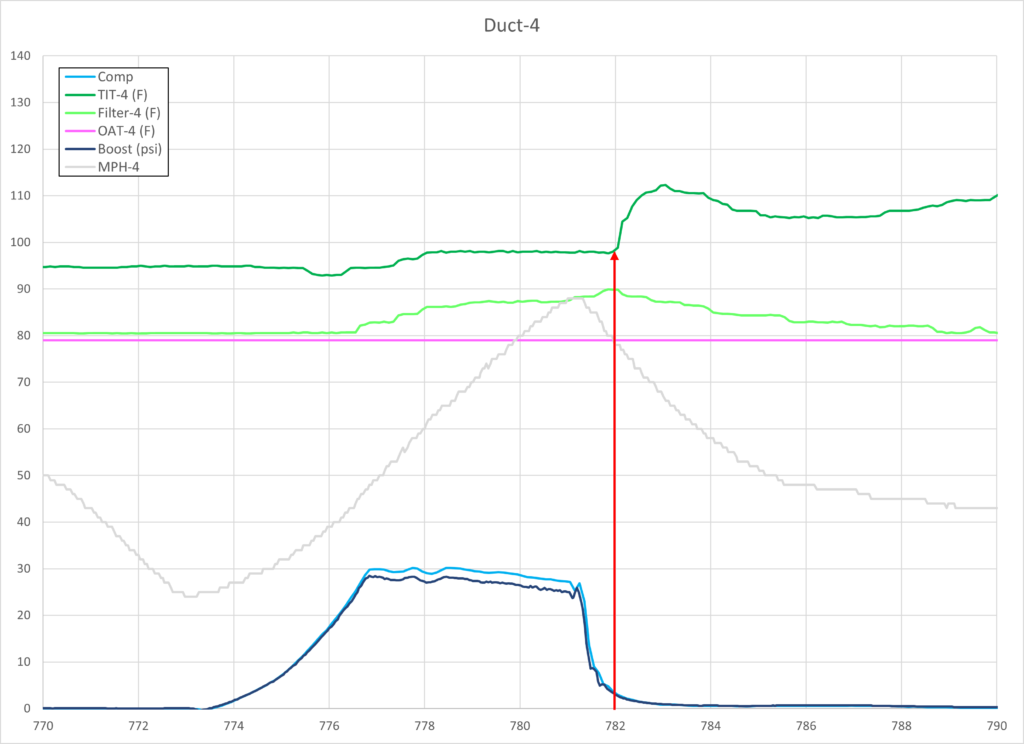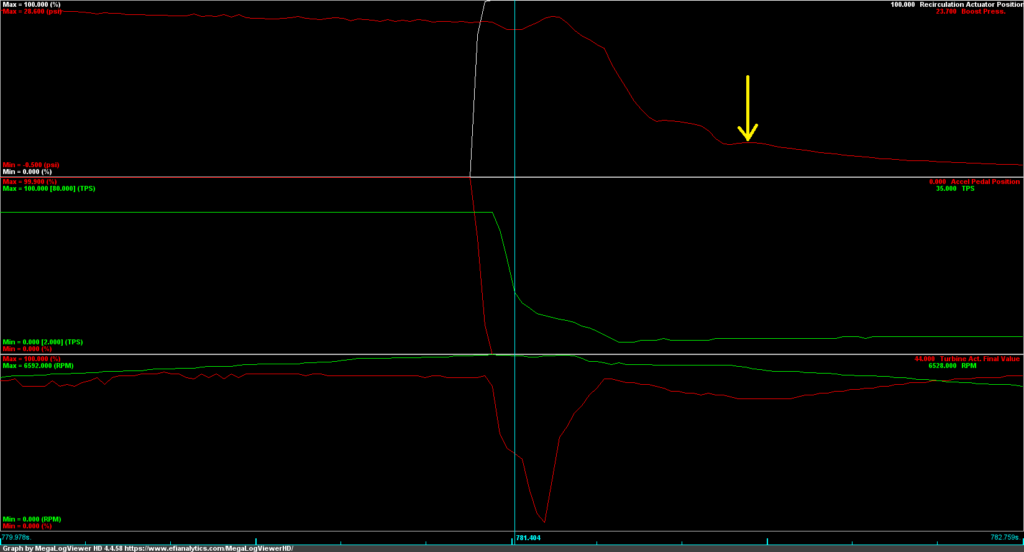Background:
While logging pre-turbocharger air temperature as part of an investigation of the effect the duct has on air temperatures, I noted that there is an upward spike in the turbo inlet air temperature after the acceleration pulls.

At the same time, the air temperature at the air filter is decreasing.
This is observed to occur consistently with each pull.

Looking at what is happening during this time with some air control components and measures:

A couple of noteworthy points about this chart are that after lifting off the accelerator pedal the throttle plate begins to close quickly, and the boost pressure starts to decrease slightly.
Momentarily thereafter, about the time indicated with the cyan vertical line, the closure rate of the throttle plate decreases, which is followed by a brief increase in the boost pressure, which then resumes dropping.
At the time indicated by the yellow arrow, the temperature spike at the turbocharger inlet is recorded.
Cause Analysis:
A logical explanation for the spike in the temperature in front of the turbocharger is the Diverter Valve opening and discharging the high-temperature charge air into the inlet.
In this case, the explanation doesn’t hold up because a recirculating diverter valve is not being used. The Forge Atmospheric Blowoff valve is in use, which vents all of the discharge air to the atmosphere outside of the intake.

The next logical explanation is that the hot air in the charges pipes is going backward past the compressor wheel.
At the time indicated by the yellow arrow, the boost pressure is 5.2 psi, and the throttle plate is nearly completely closed (9%), these conditions would support pressurized air going back through the compressor and into the intake where it would mix with the cooler air that was drawn in through the air filter.
This poses a dilemma for the proponents of the belief that recirculation valves help the turbocharger spool-up more quickly by dumping air in the compressor wheel. Clearly, there is pressurized air behind the compressor wheel that is trying to get out past the compressor and into the intake.
The recirculated discharge air would have a much easier time going back out of the intake, into a region where the air is at atmospheric pressure, versus going into pressurized air. Air moves from regions of higher pressure to lower pressure.
A significant observation is that the throttle plate does not quickly close all the way. The ramifications of this fact on comparing the rates at which boost pressure drops and builds with different recirculation valves, i.e. BOV or DV, is huge.
Conclusion:
Based upon the measures shown above and the components installed on the GTI my conclusion is that some of the pressurized air in the charge pipes is escaping past the compressor wheel and into the pre-turbo intake, creating a momentary increase in the air temperature inside the turbo inlet elbow.

Is there an audible flutter from the turbo on release from WOT?
I can’t tell when I’m using the BOV. When I use the DV I’ve usually got a closed intake on the car.
The temperature spike lasts for about 1 second before it starts dropping, and it’s occurring while the BOV is open. I doubt when driving the car it would be noticed based on how briefly it lasts, that the BOV/DV is venting at the same time and the relatively low pressure at that phase.